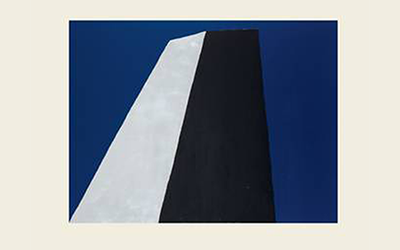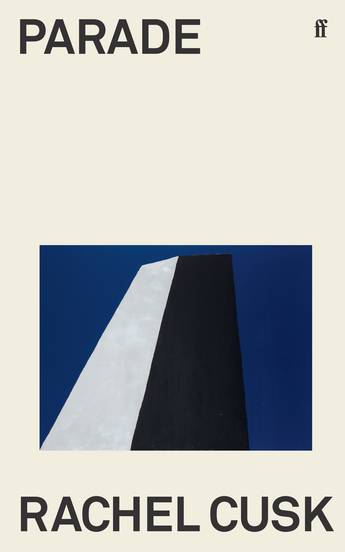
- Free Article: No
- Contents Category: Fiction
- Review Article: Yes
- Article Title: Oscillating paradoxes
- Article Subtitle: Pushing the boundaries of fiction
- Online Only: No
- Custom Highlight Text:
Dominated by tropes of repetition, inversion, and doubling, Parade feels like a hall of mirrors that reflects and re-imagines pieces of reality while also refracting elements of Rachel Cusk’s own body of work. This is not recognisably a novel or a collection of short fiction, but a new iteration of the style initiated by Cusk’s lauded Outline trilogy (2014), a patchwork of vignettes unfolded by an enigmatic narrator. Cusk continues to push the boundaries of fiction, exploring oscillating paradoxes of connection and disconnection, passion and dispassion, attachment and hatred, creation and destruction. At the heart of all of these is the generative primal conflict of gender; together these form the bleak coordinates of the Cusk cosmos.
- Featured Image (400px * 250px):

- Alt Tag (Featured Image): Kirsten Tranter reviews ‘Parade’ by Rachel Cusk
- Book 1 Title: Parade
- Book 1 Biblio: Faber, $27 pb, 198 pp
- Book 1 Cover Small (400 x 600):

- Book 1 Cover (800 x 1200):

- Book 1 Readings Link: https://www.readings.com.au/product/9780571377954/parade--rachel-cusk--2024--9780571377954#rac:jokjjzr6ly9m
In this disparate parade of vignettes, the misogynist painter and his wife torment one another in silent emotional torture; a woman is traumatised by a savage, random assault; a couple visit a distant commune in a state of decline and experience a brush with a mythological death-dealing figure known as ‘the midwife’; a man throws himself to his death inside a museum; a woman artist struggles to free herself from an oppressive marriage; a collection of critics, artists, and curators gather in the aftermath of the museum suicide, unable to construct a coherent narrative of the tragedy. Children are born, igniting the possibility of love amid this dark matrix of heterosexual misery; parents die, leaving their adult children lost and not entirely free.
Three of the four obliquely connected stories follow a similar structure of interwoven sections in different voices, one told in distant third person about an artist (or artists) known only as ‘G’, and the other narrated in first person, mostly through the collective pronoun ‘we’. Confusingly, all the artists in all the stories are known as ‘G’. Painters, sculptors, authors, filmmakers, women and men, living and dead – as ‘G’ they all blur together.
The effect is just as confusing as it sounds. Parade takes Cusk’s work further in the direction of philosophical puzzle, and further away from realist fiction. Some of these artists are recognisable versions of real figures – Louise Bourgeois’s nightmare giant spider sculptures in the suicide museum story are impossible to confuse with another artist, for instance. Others seem possibly invented or generic. There are no helpful notes at the end. I am not against allusion, if that is the correct name for it – in fact, I treasure it – but here it raises questions that are not resolved by the book, or at least not for me. Does it matter that I recognise Bourgeois? Am I showing my ignorance of experimental cinema by not being able to exactly place the filmmaker character who makes observational cinema with non-professional actors? Which museum, which sociopathic art critic, restaurant, parade, city, is being referenced from one story to another? Am I following all the clues? What mystery will I solve if I do? What meaning will be closed to me if I don’t?
There are compensations for this maddening confusion. Cusk seems bent on frustrating the pleasures that might come from more conventional storytelling, but her style is entrancing, filled with luminous images. In the third story, an account of a dinner party filled with art-world figures, the setting is evoked as the evening wears on with an attention to detail that is strikingly attuned to beauty and possibility, in contrast to the excoriating satire the author brings to her descriptions of human beings: ‘The air was still thick with heat but the blue of evening had started to collect in the courtyard. The shapes of people and objects began to grow harder and more distinct, as though with the departure of light they were acquiring substance.’ Meanwhile, Cusk’s spectacularly unsympathetic characters complain about the inconvenience caused by people killing themselves on commuter train lines, casually reflect on their own emotional emptiness, and wonder if masculinity is incompatible with any display of weakness, like being afraid of pigeons. ‘I thought masculinity didn’t exist any more,’ remarks a dinner party guest named Betsy, distilling one of the questions at the centre of Cusk’s work; ‘I thought there was just violence.’
In the face of the intellectual severity of Parade, it feels embarrassing to admit nostalgia for some of the things I loved about Cusk’s early novels – the artful comedy, the carefully calibrated narrative tension, the characters who felt somehow real even when they verged on caricatures – and the deliberate unfolding of internal and external conflicts in the Outline trilogy that seems Dickensian in contrast with Parade. Am I showing kinship with the critics who do not appreciate the complex work of the filmmaker ‘G’ in the final story, the ones who ‘expected a storyteller to demonstrate his mastery and control by resolving the confusion and ambiguity of reality, not deepening it’?
What is art, asks Parade, and what is it for? Is it, as another guest suggests, the equivalent of moments when infants proudly display their own faeces? Or is it a kind of spiritual communion? It is undoubtably a vehicle for expressing emotions – chiefly hatred, shame, and ambivalence about the body in this fictional world. How might a writer approach its potential as an expression of human longing for freedom and transcendence through the art of fiction? Cusk’s approach to this problem rejects traditional narrative as a way to get there, and instead breaks fiction down into fragments, remaking it into something exhilarating and disorienting in equal measure.


Comments powered by CComment